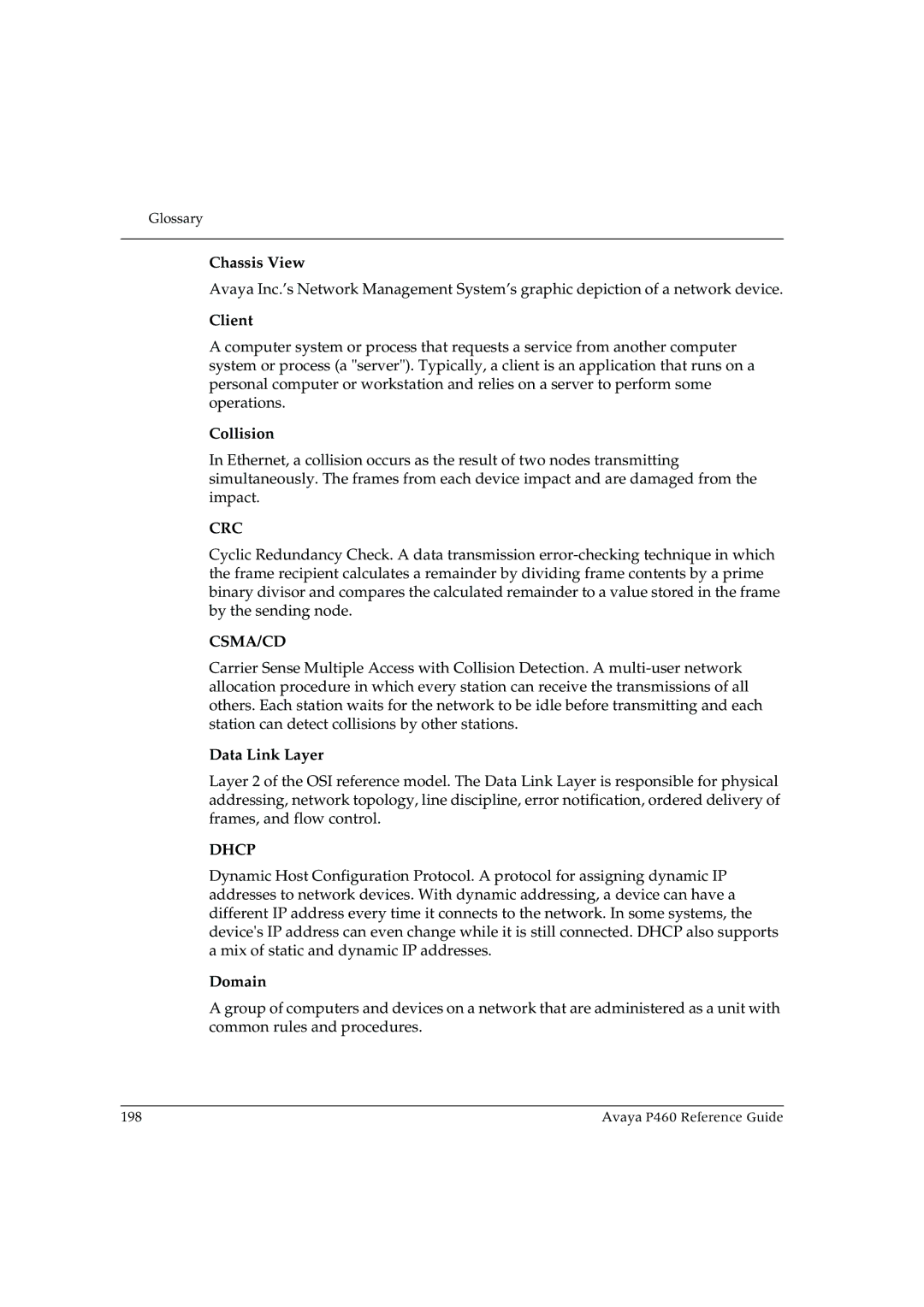
Glossary
Chassis View
Avaya Inc.’s Network Management System’s graphic depiction of a network device.
Client
A computer system or process that requests a service from another computer system or process (a "server"). Typically, a client is an application that runs on a personal computer or workstation and relies on a server to perform some operations.
Collision
In Ethernet, a collision occurs as the result of two nodes transmitting simultaneously. The frames from each device impact and are damaged from the impact.
CRC
Cyclic Redundancy Check. A data transmission
CSMA/CD
Carrier Sense Multiple Access with Collision Detection. A
Data Link Layer
Layer 2 of the OSI reference model. The Data Link Layer is responsible for physical addressing, network topology, line discipline, error notification, ordered delivery of frames, and flow control.
DHCP
Dynamic Host Configuration Protocol. A protocol for assigning dynamic IP addresses to network devices. With dynamic addressing, a device can have a different IP address every time it connects to the network. In some systems, the device's IP address can even change while it is still connected. DHCP also supports a mix of static and dynamic IP addresses.
Domain
A group of computers and devices on a network that are administered as a unit with common rules and procedures.
198 | Avaya P460 Reference Guide |
